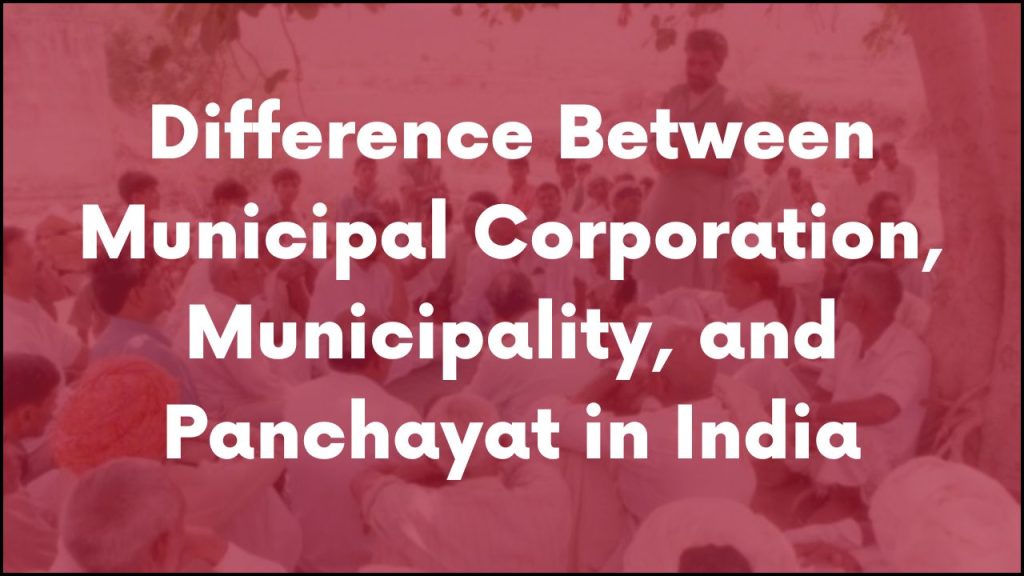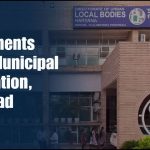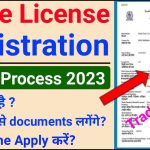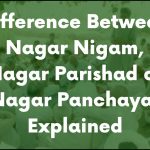Local governance plays a major role in managing daily life in towns, cities, and villages in India. Municipal Corporations, Municipalities, and Panchayats are the three main local government bodies. Each one works under different rules, serves different areas, and performs specific functions.
Introduction to Local Government Bodies
Local bodies help in the smooth administration of local areas
Local self-government exists in both urban and rural areas
Two types of local bodies are:
Urban Local Bodies (ULBs) – Municipal Corporation and MunicipalityRural Local Bodies (RLBs) – Panchayat
Basic Definitions Term Definition Municipal Corporation An urban local body that governs large cities with a population of over 1 million Municipality An urban local body that governs large cities with a population over 1 million Panchayat An urban local body that manages smaller cities and towns
Structure and Administration Municipal Corporation
Large city administration is done by Municipal Corporations
Major cities like Delhi, Mumbai, and Chennai have Municipal Corporations
The three-tier structure includes:
Mayor (Head)Municipal Commissioner (Executive officer)Corporators (Elected members)
Municipality
Medium-sized town administration is done by Municipalities
Cities with a population between 1 lakh and 10 lakh usually have Municipalities
Structure includes:
Chairperson or President (Head)Municipal Officers Councilors (Elected representatives)
Panchayat
Village and rural area governance is handled by Panchayats
The three-tier structure includes:
Gram Panchayat (Village level)Panchayat Samiti (Block level)Zila Parishad (District level)
Comparison Points Municipal Corporation Municipality Panchayat Area of Operation Big cities Towns and small cities Villages and rural areas Population Covered More than 1 million 1 lakh to 10 lakh Less than 1 lakh Head Mayor Chairperson Sarpanch (Gram Panchayat) Formation Authority State Government State Government State Government under Panchayati Raj Administrative Officer Municipal Commissioner Municipal Officer Panchayat Secretary Revenue Source Taxes, fees, grants Taxes, fees, grants Grants, taxes, local income Major Responsibility Urban development Local urban management Rural development Election Period Every 5 years Every 5 years Every 5 years
Functions and Responsibilities Municipal Corporation
Cleanliness and sanitation maintenance
Street light and road management
Waste management
Urban planning and building approval
Health care and hospital management
Public transport services
Birth and death registration
Municipality
Water supply and drainage systems
Road repair and maintenance
Public toilets and parks
School and primary education management
Collection of property tax
Promotion of small businesses
Panchayat
Drinking water facility in villages
Maintenance of rural roads
Health and sanitation at the village level
Rural housing programs
Welfare schemes for the poor
Management of local markets
Promotion of agriculture and animal husbandry
Revenue and Funding Sources Source Municipal Corporation Municipality Panchayat Property Tax Yes Yes Rare or low amount House Tax Yes Yes Yes Water and Sewerage Charges Yes Yes Limited Grants from State/Central Govt Yes Yes Yes Licenses and User Charges Yes Yes Minimal Donations Sometimes Sometimes Sometimes
Legal Provisions
Municipal Corporations and Municipalities operate under the 74th Constitutional Amendment Act, 1992 Panchayats operate under the 73rd Constitutional Amendment Act, 1992 State Governments make specific laws for the functioning and powers of these bodies
Importance in Indian Governance
Municipal Corporations help manage large urban populations
Municipalities provide essential services to town residents
Panchayats bring democracy to the village level
Local bodies increase public participation in governance
Decentralized governance ensures quicker problem resolution
Example Cities and Villages Type Example Locations Municipal Corporation Delhi, Mumbai, Chennai, Bengaluru Municipality Panipat, Karnal, Ambala Panchayat Ladwa, Radaur, small villages in Tamil Nadu and Bihar
Challenges Faced Municipal Corporations
Overcrowding in cities
Insufficient funds for infrastructure
Pollution and waste management issues
Municipalities
Shortage of skilled manpower
Delay in fund allocation
Poor implementation of schemes
Panchayats
Lack of awareness among villagers
Political interference
Dependence on state grants
Recent Developments
Digital platforms introduced for public services
Swachh Bharat Mission was promoted in all local bodies
Smart City Mission is supported by Municipal Corporations
Rural Development Schemes like MGNREGA are executed through Panchayats
The Bottom Line
Municipal Corporations, Municipalities, and Panchayats form the backbone of local governance in India
Each body serves a specific area and fulfills unique responsibilities
Proper coordination among these bodies ensures development at all levels
Strengthening local self-governance leads to better service delivery and public welfare










